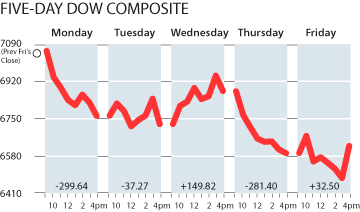By Peter Coy (Business Week)
So far, few people have focused on what exactly the Fed is getting in exchange for supplying $29 billion to JPMorgan Chase. That's a bit surprising because whatever the deal is, it's far from a standard loan. The strangest twist is that even though the money goes to JPMorgan, that firm isn't the borrower. So the Fed can't demand repayment from JPMorgan if the Bear assets turn out to be worth less than promised.
What's also odd is that if there's money left after loans are paid off, the Fed gets to keep the residual value for itself. That's what one would expect if the Fed were buying the assets, not just treating them as collateral for a loan. Vincent R. Reinhart, a former director of the Fed's Division of Monetary Affairs and now a resident scholar at the American Enterprise Institute, said in an interview on Mar. 26: "The New York Fed is the residual claimant. That doesn't look to me like a loan. That looks like equity."
Here's how it works: A Delaware-based limited liability company will be set up to receive, upon completion of the merger, $30 billion in various Bear holdings, such as mortgage-backed securities. The Fed will lend $29 billion to that company, which will pass all the money along to JPMorgan, Bear's new owner. JPMorgan itself will lend $1 billion to the Delaware company. The company, managed by BlackRock Financial Management, will pay back the loans by gradually liquidating the assets. As a protection for the Fed, it gets paid back fully before JPMorgan gets back anything on its loan. The other sweetener for the Fed is that if there's money left over even after JPMorgan gets repaid, the Fed gets it all
Subscribe to:
Post Comments (Atom)



No comments:
Post a Comment